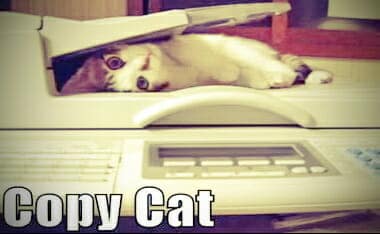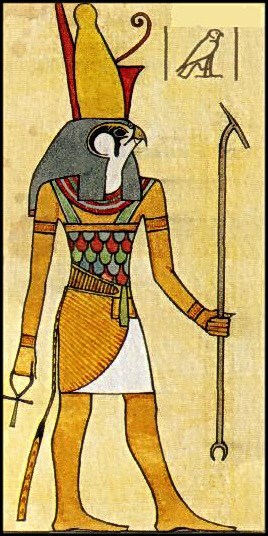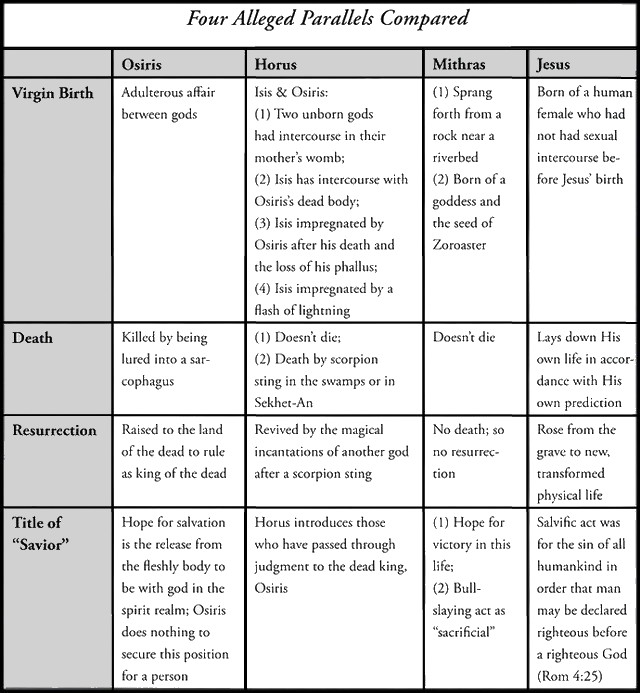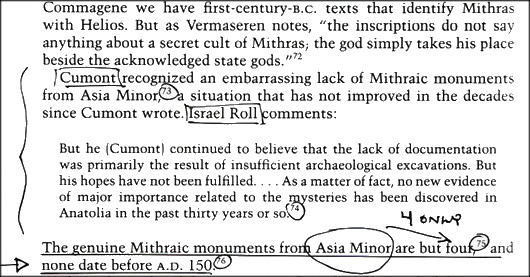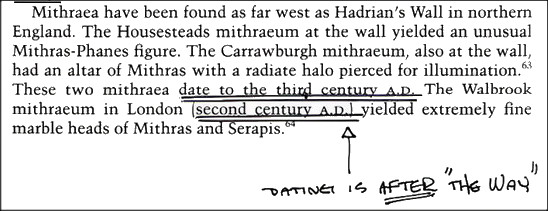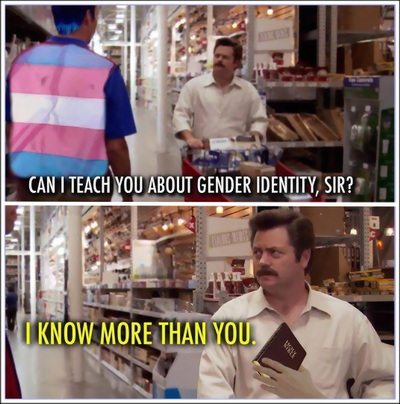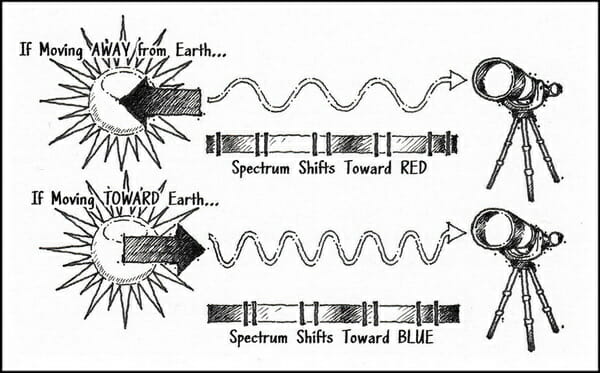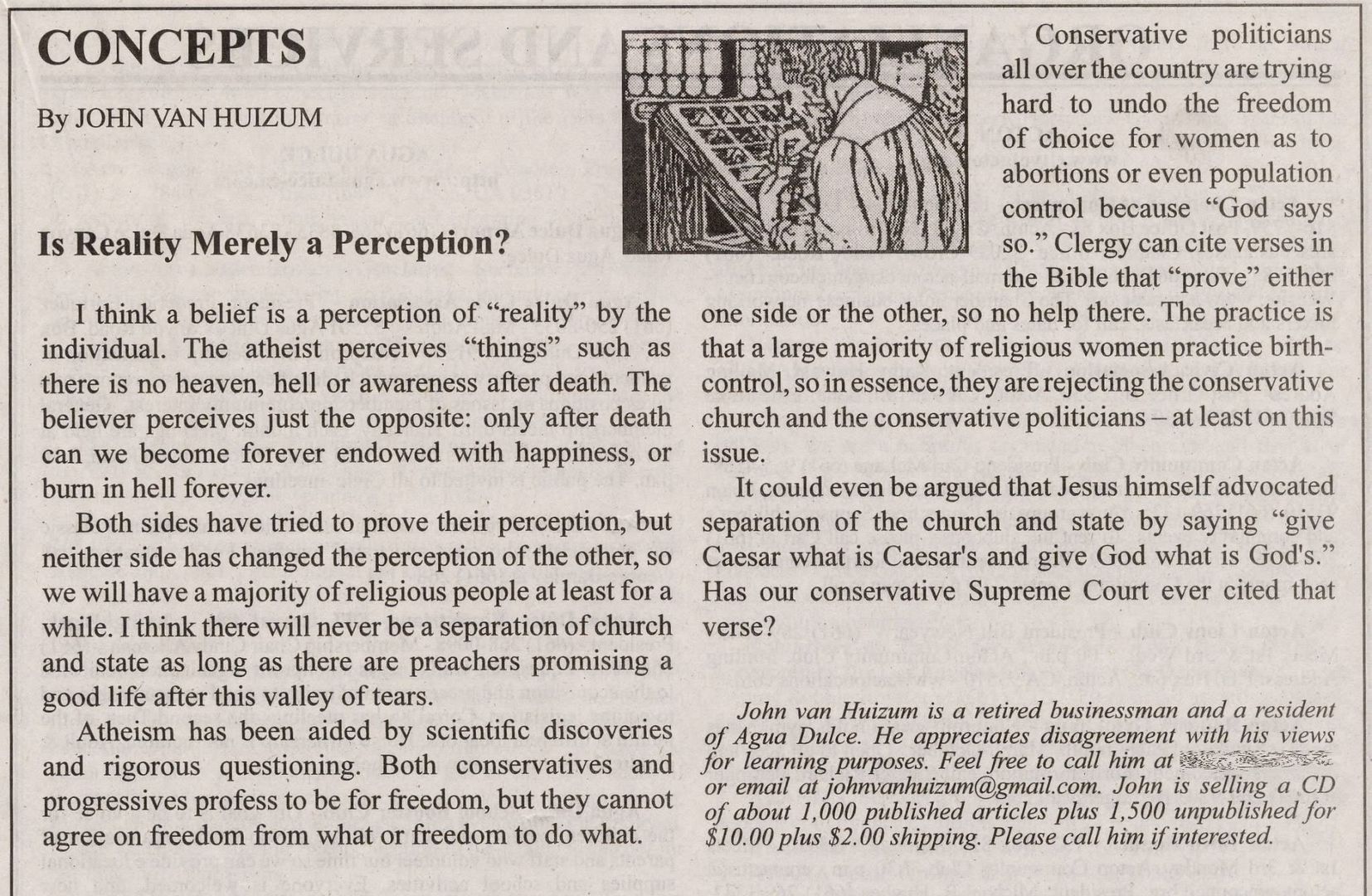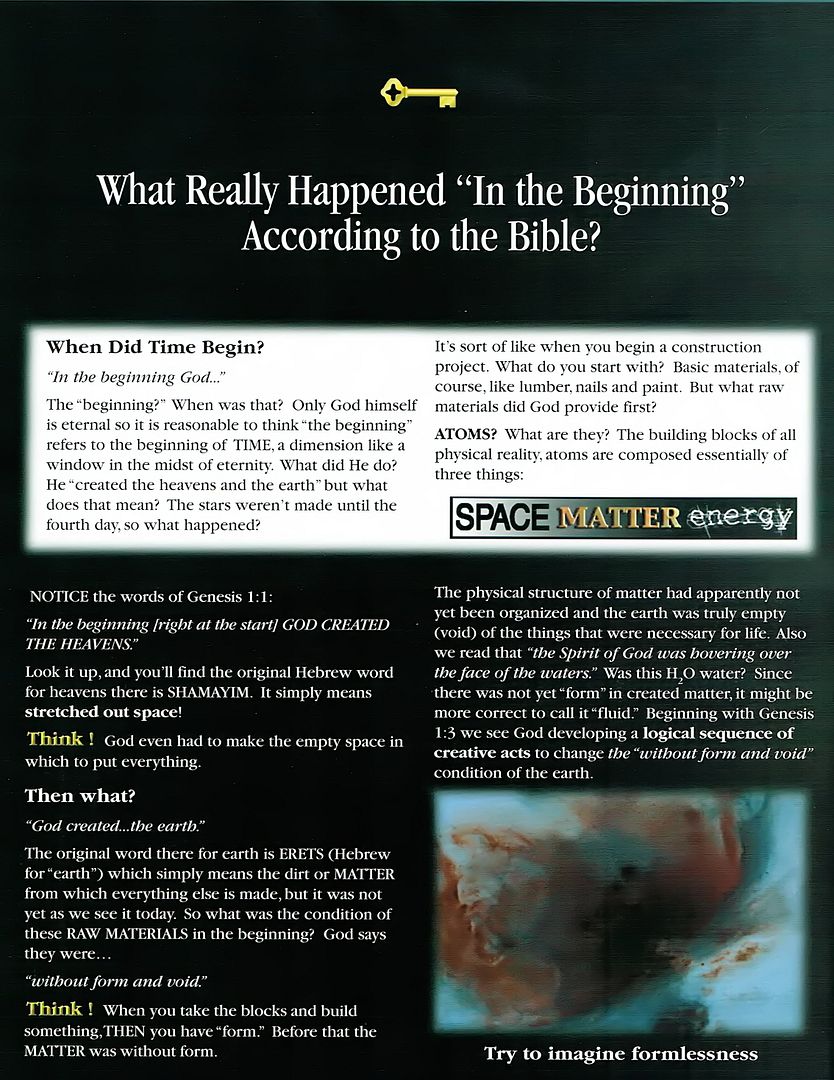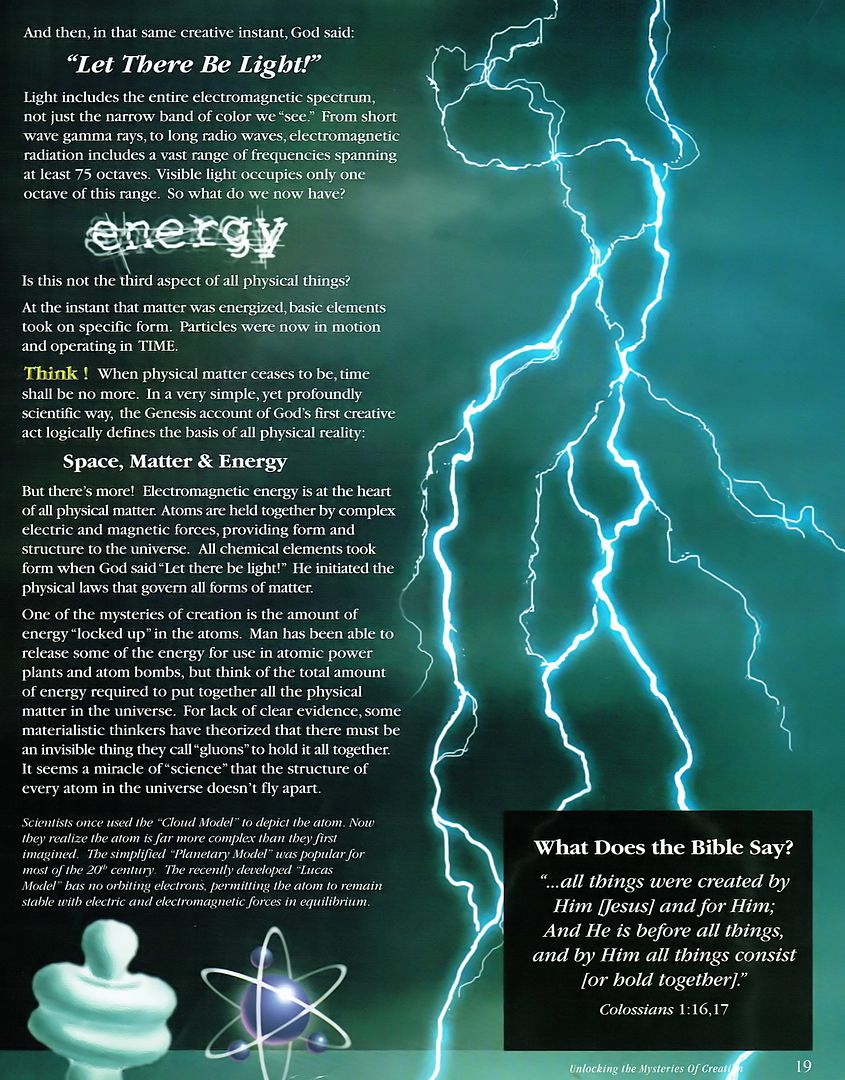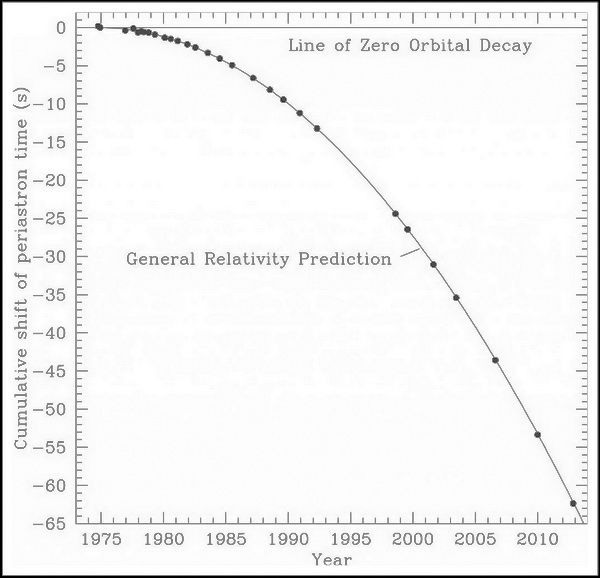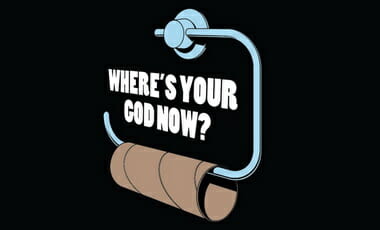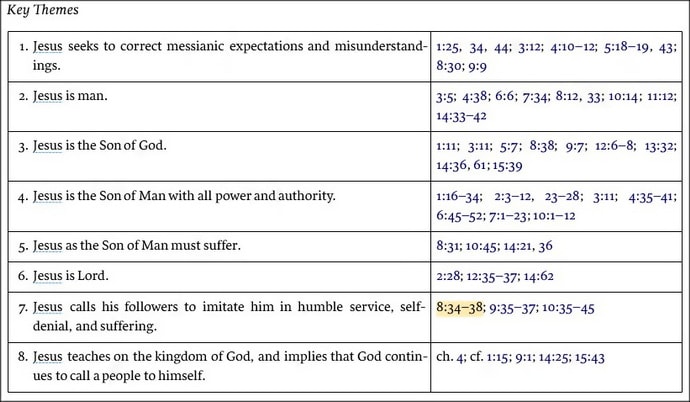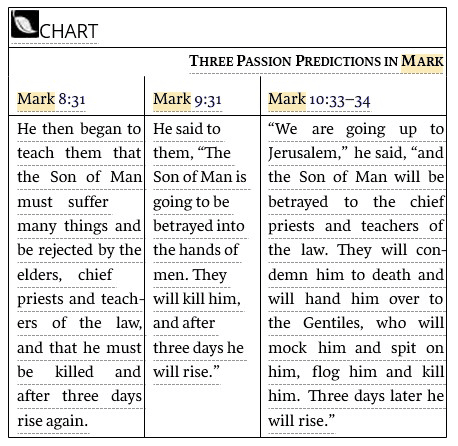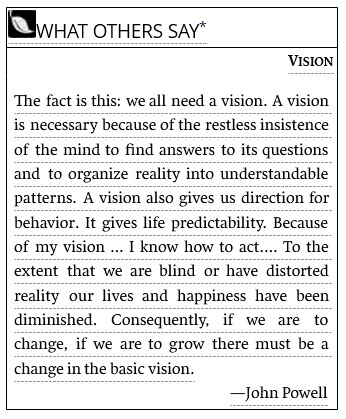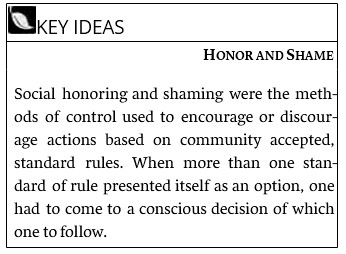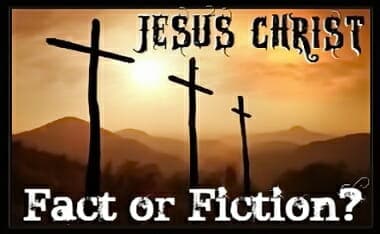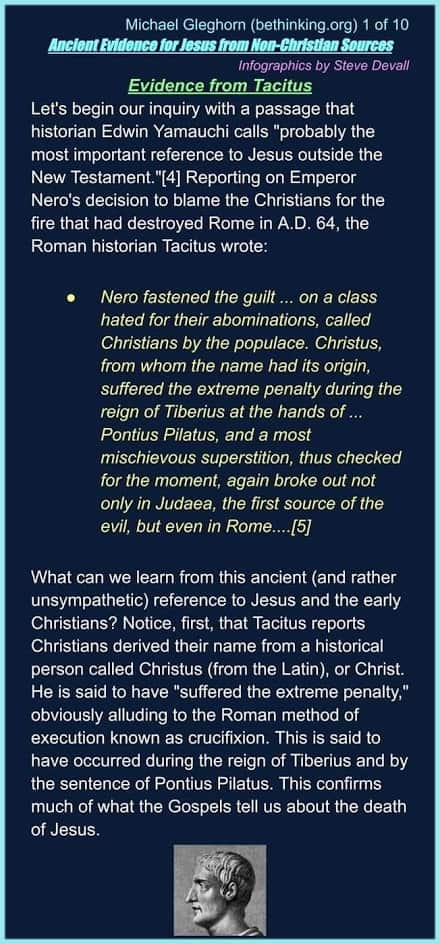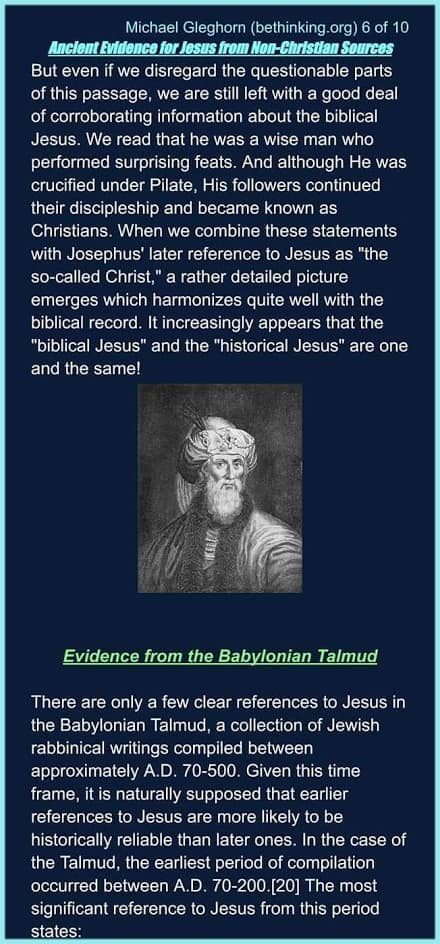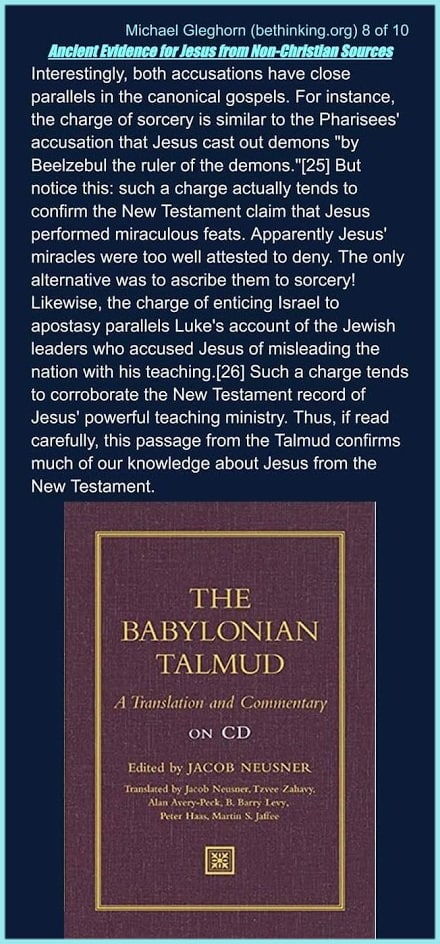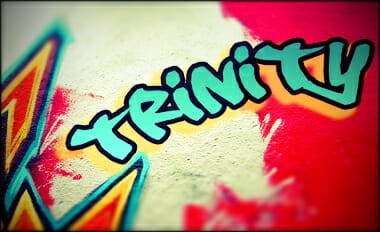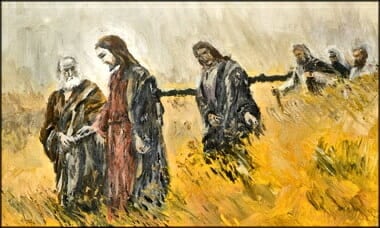Originally Posted November of 2012
Here Dr. William Lane Craig demonstrates that atheism cannot give an account for reason, logic, and truth.
EVOLUTION NEWS AND VIEWS has this bitchin post:
About a decade ago I would muse on what it might take for intelligent design to win the day. Clearly, its intellectual and scientific project needed to move forward, and, happily, that has been happening. But I was also thinking in terms of a watershed event, something that could have the effect of a Berlin Wall coming down, so that nothing thereafter was the same. It struck me that an event like this could involve some notable atheists coming to reverse themselves on the evidence for design in the cosmos.
Shortly after these musings, Antony Flew, who had been the most notable intellectual atheist in the English-speaking world until Richard Dawkins supplanted him, announced that he had come to believe in God (a deistic deity and not the full-blooded deity of ethical monotheism) on account of intelligent design arguments. I wondered whether this could be the start of that Berlin Wall coming down, but was quickly disabused as the New York Times and other media outlets quickly dismissed Flew’s conversion as a sign of his dotage (he was in his eighties when he deconverted from atheism). Flew, though sound in mind despite what his critics were saying (I spoke with him on the phone in 2006), was quickly marginalized and his deconversion didn’t have nearly the impact that it might have.
Still, I may have been on to something about defections of high profile intellectuals from Darwinian naturalism and the effect that this might have in creating conceptual space for intelligent design and ultimately winning the day for it. In 2011 we saw University of Chicago molecular biologist James Shapiro deconstruct Darwinian evolution with an incisiveness and vigor that even the ID community has found hard to match (for my review of his Evolution: A View from the 21st Century, go here; for my exchange with Shapiro on this forum, go here).
A Most Disconcerting Deconversion
Thomas Nagel, with his just published Mind & Cosmos, has now become another such defector from Darwinian naturalism. Appearing from Oxford University Press and subtitled Why the Materialist Neo-Darwinian Conception of Nature is Almost Certainly False, this slender volume (it’s only 130 pages) represents the most disconcerting defection (disconcerting to Darwinists) from Darwinian naturalism to date. We’re still not talking the Berlin Wall coming down, but it’s not hard to see it as a realistic possibility, off in the distance, after reading this book.
Because intelligent design is still a minority position that is widely marginalized by the media and mainstream science, it’s easy for defenders of intelligent design to wax apocalyptic. Indeed, it’s a very natural impulse to want to throw off the shackles of an oppressive and powerful majority, especially when one views their authority as unwarranted and unjust. So I have to keep my own impulses in check when I make comments about the Berlin Wall coming down (by the way, I had an uncle, aunt, and cousins who lived in “West Berlin” at the time as well as relatives in Poland, so my interest in the Berlin Wall is not merely hypothetical). But Thomas Nagel is a very major intellectual on the American scene and his no-holds-barred deconstruction of Darwinian naturalism is just the sort of critique, coupled with others to be sure, that will, if anything, unravel Darwin’s legacy.
Nagel is a philosopher at New York University. Now in his 70s, he has been a towering figure in the field, and his essays were mandatory reading, certainly when I was a graduate student in philosophy in the early 1990s. His wildly popular essay “What Is It Like to Be a Bat?” takes on reductionist accounts of mind, and his books Mortal Questions (Cambridge, 1979) and The View from Nowhere (Oxford, 1986) seemed to be in many of my fellow graduate students’ backpacks.
Reading Nagel’s latest, I had the sense of watching Peter Finch in the film Network (1976), where he rants “I’m mad as hell and I’m not going to take this anymore” (in that famous monologue, Finch also says “I’m a human being, my life has value” — a remarkable point to make three years after Roe v. Wade; to see the monologue, go here). Now Nagel in Mind & Cosmos, unlike Finch in Network, is measured and calm, but he is no less adamant that the bullying by Darwinists needs to stop. Perhaps with Richard Dawkins in mind, who has remarked that dissenters from Darwin are either ignorant, stupid, wicked, insane, or brainwashed, Nagel writes,
I realize that such doubts [about Darwinian naturalism] will strike many people as outrageous, but that is because almost everyone in our secular culture has been browbeaten into regarding the reductive research program as sacrosanct, on the ground that anything else would not be science.
Nagel has nailed it here. The threat of being branded unscientific in the name of a patently ill-supported Darwinian evolutionary story is the thing that most keeps Darwinism alive (certainly not the evidence for it). We saw a similar phenomenon in the old communist Eastern bloc. Lots of people doubted Marxism-Leninism. But to express such doubt would get one branded as a reactionary. And so people kept silent. I recall David Berlinski, a well-known Darwin skeptic, telling me about a reading group at MIT among faculty there who studied his work but did so sub rosalest they have to face the wrath of Darwinists.
In Mind & Cosmos, Nagel serves notice on Darwinists that their coercive tactics at ensuring conformity have not worked with him and, if his example inspires others, won’t work with them either. What a wonderful subtitle to his book: Why the Materialist Neo-Darwinian Conception of Nature is Almost Certainly False. It’s a dare. Go ahead, make my day, do your worst to bring the wrath of Darwin’s devoted disciples on me. Nagel regards the emperor as without clothes and says so:
For a long time I have found the materialist account of how we and our fellow organisms came to exist hard to believe, including the standard version of how the evolutionary process works. The more details we learn about the chemical basis of life and the intricacy of the genetic code, the more unbelievable the standard historical account becomes. This is just the opinion of a layman who reads widely in the literature that explains contemporary science to the nonspecialist. Perhaps that literature presents the situation with a simplicity and confidence that does not reflect the most sophisticated scientific thought in these areas. But it seems to me that, as it is usually presented, the current orthodoxy about the cosmic order is the product of governing assumptions that are unsupported, and that it flies in the face of common sense.
William Lane Craig shows how the naturalist cannot trust their own thinking. He mentioned Alvin Plantinga who argues that if evolution is true that spells trouble for the atheist. Indeed, can the atheist (who calls himself a “free thinker”) be free if his brain is no more than matter and motion dictated by the laws of nature?
And this update from The Weekly Standard [DEFUNCT] now at WASHINIGTON EXAMINER:
Last fall, a few days before Halloween and about a month after the publication of Mind and Cosmos, the controversial new book by the philosopher Thomas Nagel, several of the world’s leading philosophers gathered with a group of cutting-edge scientists in the conference room of a charming inn in the Berkshires. They faced one another around a big table set with pitchers of iced water and trays of hard candies wrapped in cellophane and talked and talked, as public intellectuals do. PowerPoint was often brought into play.
The title of the “interdisciplinary workshop” was “Moving Naturalism Forward.” For those of us who like to kill time sitting around pondering the nature of reality—personhood, God, moral judgment, free will, what have you—this was the Concert for Bangladesh. The biologist Richard Dawkins was there, author of The Blind Watchmaker, The Selfish Gene, and other bestselling books of popular science, and so was Daniel Dennett, a philosopher at Tufts and author of Consciousness Explained and Darwin’s Dangerous Idea: Evolution and the Meanings of Life. So were the authors of Why Evolution is True, The Really Hard Problem: Meaning in a Material World, Everything Must Go: Metaphysics Naturalized, and The Atheist’s Guide to Reality: Enjoying Life without Illusions—all of them books that to one degree or another bring to a larger audience the world as scientists have discovered it to be.
[….]
Daniel Dennett took a different view. While it is true that materialism tells us a human being is nothing more than a “moist robot”—a phrase Dennett took from a Dilbert comic—we run a risk when we let this cat, or robot, out of the bag. If we repeatedly tell folks that their sense of free will or belief in objective morality is essentially an illusion, such knowledge has the potential to undermine civilization itself, Dennett believes. Civil order requires the general acceptance of personal responsibility, which is closely linked to the notion of free will. Better, said Dennett, if the public were told that “for general purposes” the self and free will and objective morality do indeed exist—that colors and sounds exist, too—“just not in the way they think.” They “exist in a special way,” which is to say, ultimately, not at all.
[….]
…How did we lose Tom….
Thomas Nagel may be the most famous philosopher in the United States—a bit like being the best power forward in the Lullaby League, but still. His paper “What Is It Like to Be a Bat?” was recognized as a classic when it was published in 1974. Today it is a staple of undergraduate philosophy classes. His books range with a light touch over ethics and politics and the philosophy of mind. His papers are admired not only for their philosophical provocations but also for their rare (among modern philosophers) simplicity and stylistic clarity, bordering sometimes on literary grace.
Nagel occupies an endowed chair at NYU as a University Professor, a rare and exalted position that frees him to teach whatever course he wants. Before coming to NYU he taught at Princeton for 15 years. He dabbles in the higher journalism, contributing articles frequently to the New York Review of Books and now and then to the New Republic. A confirmed atheist, he lacks what he calls the sensus divinitatis that leads some people to embrace the numinous. But he does possess a finely tuned sensus socialistis; his most notable excursion into politics was a book-length plea for the confiscation of wealth and its radical redistribution—a view that places him safely in the narrow strip of respectable political opinion among successful American academics.
For all this and more, Thomas Nagel is a prominent and heretofore respected member of the country’s intellectual elite. And such men are not supposed to write books with subtitles like the one he tacked onto Mind and Cosmos: Why the Materialist Neo-Darwinian Conception of Nature Is Almost Certainly False.
Imagine if your local archbishop climbed into the pulpit and started reading from the Collected Works of Friedrich Nietzsche. “What has gotten into Thomas Nagel?” demanded the evolutionary psychologist Steven Pinker, on Twitter. (Yes, even Steven Pinker tweets.) Pinker inserted a link to a negative review of Nagel’s book, which he said “exposed the shoddy reasoning of a once-great thinker.” At the point where science, philosophy, and public discussion intersect—a dangerous intersection these days—it is simply taken for granted that by attacking naturalism Thomas Nagel has rendered himself an embarrassment to his colleagues and a traitor to his class.
The Guardian awarded Mind and Cosmos its prize for the Most Despised Science Book of 2012. The reviews were numerous and overwhelmingly negative; one of the kindest, in the British magazine Prospect, carried the defensive headline “Thomas Nagel is not crazy.” (Really, he’s not!) Most other reviewers weren’t so sure about that. Almost before the ink was dry on Nagel’s book the UC Berkeley economist and prominent blogger Brad DeLong could be found gathering the straw and wood for the ritual burning. DeLong is a great believer in neo-Darwinism. He has coined the popular term “jumped-up monkeys” to describe our species. (Monkeys because we’re descended from primates; jumped-up because evolution has customized us with the ability to reason and the big brains that go with it.)
DeLong was particularly offended by Nagel’s conviction that reason allows us to “grasp objective reality.” A good materialist doesn’t believe in objective reality, certainly not in the traditional sense. “Thomas Nagel is not smarter than we are,” he wrote, responding to a reviewer who praised Nagel’s intelligence. “In fact, he seems to me to be distinctly dumber than anybody who is running even an eight-bit virtual David Hume on his wetware.” (What he means is, anybody who’s read the work of David Hume, the father of modern materialism.) DeLong’s readers gathered to jeer as the faggots were placed around the stake.
“Thomas Nagel is of absolutely no importance on this subject,” wrote one. “He’s a self-contradictory idiot,” opined another. Some made simple appeals to authority and left it at that: “Haven’t these guys ever heard of Richard Dawkins and Daniel Dennett?” The hearts of still others were broken at seeing a man of Nagel’s eminence sink so low. “It is sad that Nagel, whom my friends and I thought back in the 1960’s could leap over tall buildings with a single bound, has tripped over the Bible and fallen on his face. Very sad.”
Nagel doesn’t mention the Bible in his new book—or in any of his books, from what I can tell—but among materialists the mere association of a thinking person with the Bible is an insult meant to wound, as Bertie Wooster would say. Directed at Nagel, a self-declared atheist, it is more revealing of the accuser than the accused. The hysterical insults were accompanied by an insistence that the book was so bad it shouldn’t upset anyone.
“Evolutionists,” one reviewer huffily wrote, “will feel they’ve been ravaged by a sheep.” Many reviewers attacked the book on cultural as well as philosophical or scientific grounds, wondering aloud how a distinguished house like Oxford University Press could allow such a book to be published. The Philosophers’ Magazine described it with the curious word “irresponsible.” How so? In Notre Dame Philosophical Reviews, the British philosopher John Dupré explained. Mind and Cosmos, he wrote, “will certainly lend comfort (and sell a lot of copies) to the religious enemies of Darwinism.” Simon Blackburn of Cambridge University made the same point: “I regret the appearance of this book. It will only bring comfort to creationists and fans of ‘intelligent design.’ ”
But what about fans of apostasy? You don’t have to be a biblical fundamentalist or a young-earth creationist or an intelligent design enthusiast—I’m none of the above, for what it’s worth—to find Mind and Cosmos exhilarating. “For a long time I have found the materialist account of how we and our fellow organisms came to exist hard to believe,” Nagel writes. “It is prima facie highly implausible that life as we know it is the result of a sequence of physical accidents together with the mechanism of natural selection.” The prima facie impression, reinforced by common sense, should carry more weight than the clerisy gives it. “I would like to defend the untutored reaction of incredulity to the reductionist neo-Darwinian account of the origin and evolution of life.”
[….]
Nagel follows the materialist chain of reasoning all the way into the cul de sac where it inevitably winds up. Nagel’s touchier critics have accused him of launching an assault on science, when really it is an assault on the nonscientific uses to which materialism has been put. Though he does praise intelligent design advocates for having the nerve to annoy the secular establishment, he’s no creationist himself. He has no doubt that “we are products of the long history of the universe since the big bang, descended from bacteria through millions of years of natural selection.” And he assumes that the self and the body go together. “So far as we can tell,” he writes, “our mental lives, including our subjective experiences, and those of other creatures are strongly connected with and probably strictly dependent on physical events in our brains and on the physical interaction of our bodies with the rest of the physical world.” To believe otherwise is to believe, as the materialists derisively say, in “spooky stuff.” (Along with jumped-up monkeys and moist robots and countless other much-too-cute phrases, the use of spooky stuff proves that our popular science writers have spent a lot of time watching Scooby-Doo.) Nagel doesn’t believe in spooky stuff.
Materialism, then, is fine as far as it goes. It just doesn’t go as far as materialists want it to. It is a premise of science, not a finding. Scientists do their work by assuming that every phenomenon can be reduced to a material, mechanistic cause and by excluding any possibility of nonmaterial explanations. And the materialist assumption works really, really well—in detecting and quantifying things that have a material or mechanistic explanation. Materialism has allowed us to predict and control what happens in nature with astonishing success. The jaw-dropping edifice of modern science, from space probes to nanosurgery, is the result.
But the success has gone to the materialists’ heads. From a fruitful method, materialism becomes an axiom: If science can’t quantify something, it doesn’t exist, and so the subjective, unquantifiable, immaterial “manifest image” of our mental life is proved to be an illusion.
Here materialism bumps up against itself. Nagel insists that we know some things to exist even if materialism omits or ignores or is oblivious to them. Reductive materialism doesn’t account for the “brute facts” of existence—it doesn’t explain, for example, why the world exists at all, or how life arose from nonlife. Closer to home, it doesn’t plausibly explain the fundamental beliefs we rely on as we go about our everyday business: the truth of our subjective experience, our ability to reason, our capacity to recognize that some acts are virtuous and others aren’t. These failures, Nagel says, aren’t just temporary gaps in our knowledge, waiting to be filled in by new discoveries in science. On its own terms, materialism cannot account for brute facts. Brute facts are irreducible, and materialism, which operates by breaking things down to their physical components, stands useless before them. “There is little or no possibility,” he writes, “that these facts depend on nothing but the laws of physics.” …
Aren’t atheists supposed to be “free thinkers”? They often call themselves that. But if atheism is true, there is no “free” and there is no “thinking “ going on. We are all just molecular machines. Dr. Tim Stratton of Freethinking Ministries shares the stage with Frank to explain why.
And a recent addition by EVOLUTION NEWS AND VIEWS:
John West’s updated and expanded book, out this week, Darwin Day in America: How Our Politics and Culture Have Been Dehumanized in the Name of Science.
In an all new added chapter, West recounts among other recent developments the sensation that followed the publication of Thomas Nagel’s book Mind and Cosmos: Why the Materialist Neo-Darwinian Conception of Nature Is Almost Certainly False. The renowned atheist philosopher expressed admiration for advocates of intelligent design including Meyer, Behe, and Berlinski.
What was the nub of his critique of neo-Darwinism?
Nagel ultimately offered a simple but profound objection to Darwinism: “Evolutionary naturalism provides an account of our capacities that undermines their reliability, and in doing so undermines itself.” In other words, if our mind and morals are simply the accidental products of a blind material process like natural selection acting on random genetic mistakes, what confidence can we have in them as routes to truth?
The basic philosophical critique of Darwinian reductionism offered by Nagel had been made before, perhaps most notably by Sir Arthur Balfour, C.S. Lewis, and Alvin Plantinga. But around the same time as the publication of Nagel’s book came new scientific discoveries that undermined Darwinian materialism as well. In the fall of 2012, the Encyclopedia of DNA Elements (ENCODE) project released results showing that much of so-called junk DNA actually performs biological functions. The ENCODE results overturned long-repeated claims by leading Darwinian biologists that most of the human genome is genetic garbage produced by a blind evolutionary process. At the same time, the results confirmed predictions made during the previous decade by scholars who think nature displays evidence of intelligent design.
New scientific challenges to orthodox Darwinian theory have continued to proliferate. In 2013 Stephen Meyer published Darwin’s Doubt: The Explosive Origin of Animal Life and the Case for Intelligent Design, which threw down the gauntlet on the question of the origin of biological information required to build animal body plans in the history of life. The intriguing thing about Meyer’s book was not the criticism it unleashed from the usual suspects but the praise it attracted from impartial scientists. Harvard geneticist George Church lauded it as “an opportunity for bridge-building rather than dismissive polarization — bridges across cultural divides in great need of professional, respectful dialogue.” Paleontologist Mark McMenamin, coauthor of a major book from Columbia University Press on animal origins, called it “a game changer for the study of evolution” that “points us in the right direction as we seek a new theory for the origin of animals.”
Even critics of Darwin’s Doubt found themselves at a loss to come up with a convincing answer to Meyer’s query about biological information. University of California at Berkeley biologist Charles Marshall, one of the world’s leading paleontologists, attempted to answer Meyer in the pages of the journal Science and in an extended debate on British radio. But as Meyer and others pointed out, Marshall tried to explain the needed information by simply presupposing the prior existence of even more unaccounted-for genetic information. “That is not solving the problem,” said Meyer. “That’s just begging the question.”
C. S. Lewis perceptively observed in his final book that “nature gives most of her evidence in answer to the questions we ask her.” Lewis’s point was that old paradigms often persist because they blind us from asking certain questions. They begin to disintegrate once we start asking the right questions. Scientific materialism continues to surge, but perhaps the right questions are finally beginning to be asked.
It remains to be seen whether as a society we will be content to let those questions be begged or whether we will embrace the injunction of Socrates to “follow the argument . . . wherever it may lead.” The answer to that question may determine our culture’s future.
J. Warner Wallace responds to “we don’t have free will”?

